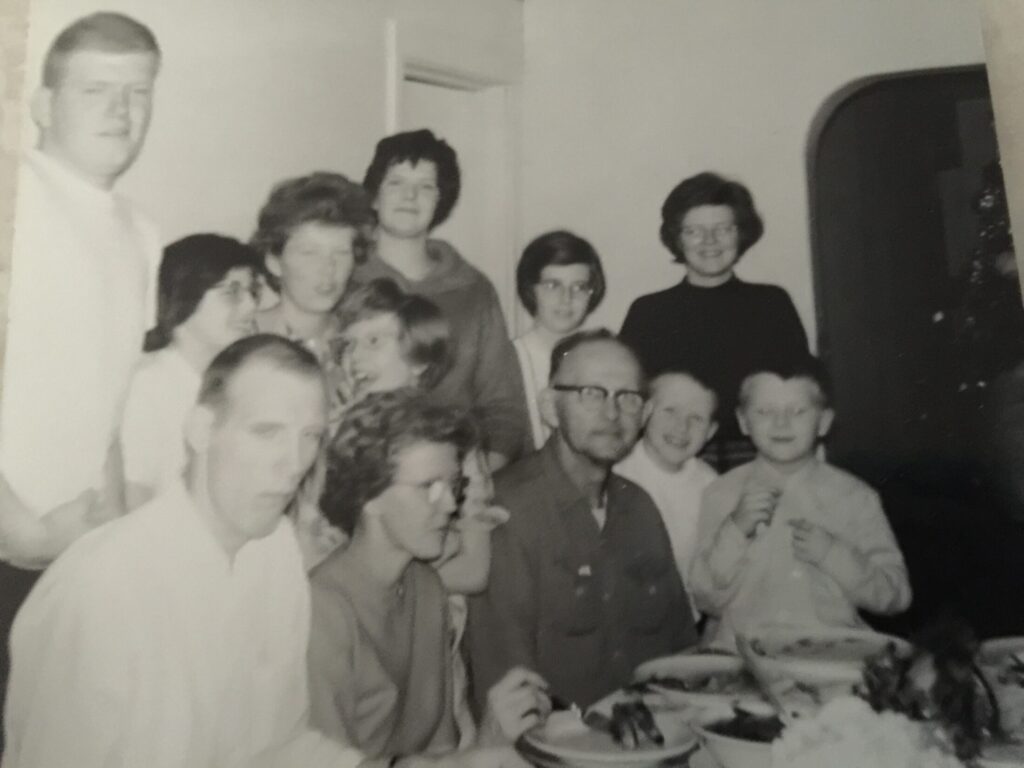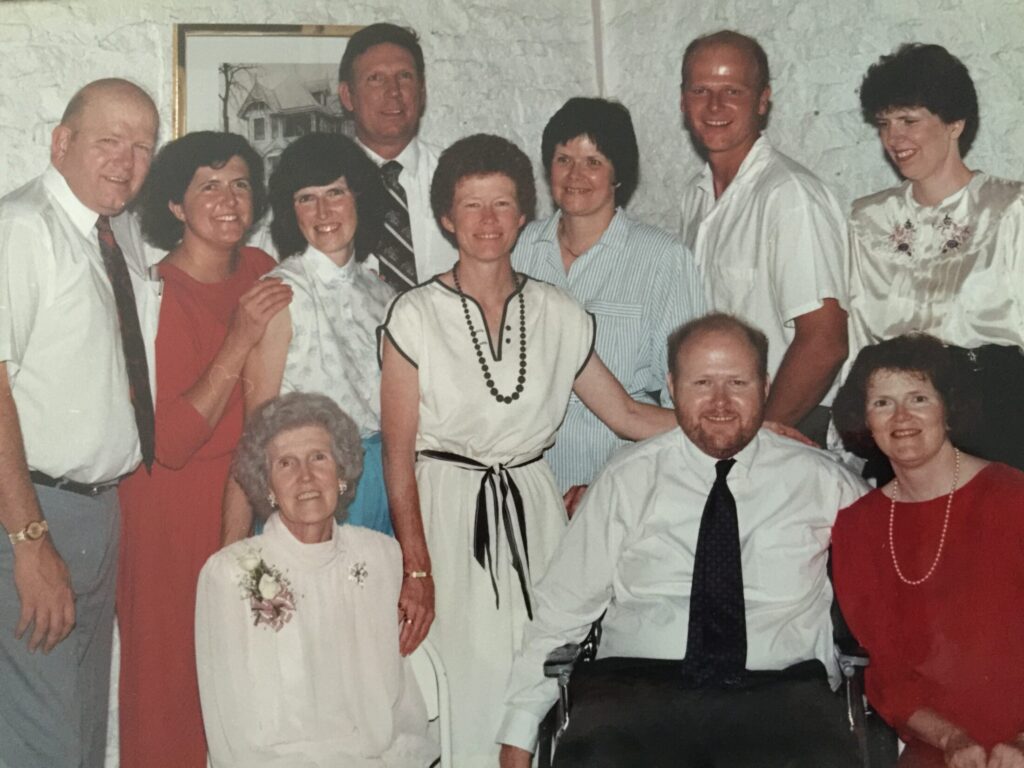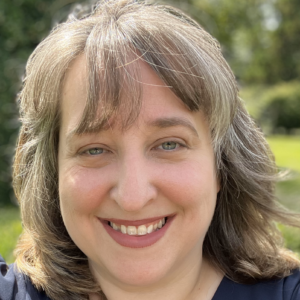
Adrienne W. Albrecht says she learned to read with her nose “practically touching the book.”
“My eyes were so loose when I was born, they told my mother not to let me have any serious falls,” said Albrecht.
After a partial lens dislocation at a young age that couldn’t be treated readily at the time, Albrecht took seriously her older brothers’ admonition to not be held back by the Marfan syndrome they shared, nor the vision impairment she faced.
“My brothers drummed into me that I could not use my low vision as an excuse,” says Albrecht.
“[My] vision did not allow for skimming or reading material over and over, so I learned to retain what I read the first time. I focused really hard and read everything I could get my hands on,” said Albrecht.
Now Third District Appellate Court of Illinois Justice Albrecht, Adrienne credits her success in part to living with Marfan syndrome.
“Being a good student earned me a scholarship to college where I eventually earned a law degree. That reading and retention served me very well. My eyes took well to computer monitors and my skill with computers gave me an advantage,” said Albrecht.
“Eventually, I succeeded in my goal of becoming a judge. My childhood struggles gave me a special understanding and ability to relate to the struggles of the individuals who appeared before me,” she added.

A “Kind of Legendary” Marfan Family
Born in 1955 in Kanakee, Illinois alongside a twin brother who does not have Marfan syndrome, Adrienne Wakat was the 8th of 10 children – 7 of whom were diagnosed with Marfan like their mother – and grew up in a “kind of legendary Marfan family.” In a bit of good medical luck, doctors believed Adrienne’s mother may have had a protective gene against aortic dissection; she lived to be 83.
“My mom had a presence. She had grace. She was such a powerful advocate for her children because she had experienced Marfan syndrome herself,” said Albrecht. Her mother’s motto was, “we’ll find a way.” She “usually did” said Albrecht, and ensured Adrienne’s teachers made necessary accommodations for her low-vision during an era when the need for access was less well-understood.
“We didn’t have the Americans with Disabilities Act, we didn’t have anything,” said Albrecht. “You had to focus on getting exactly what you needed.”
“My mom would go to the teachers ‘Now you know, Adrienne can’t see. I need you to put her in the front row. And I need you to be OK with her going up to the board and reading what’s on the board,’” said Albrecht.
Overcoming social norms of the time was challenging, “Back then, they thought all blind people could do was weave baskets,” said Albrecht. Her mother’s push toward educational access, and Adrienne’s wanting to keep up with her siblings, made all the difference.
Several of Albrecht’s siblings did sadly experience both non-fatal and fatal dissections over time. Marfan syndrome has also caused members of her family to live with a host of medical complications.
“My family exemplifies resilience,” said Albrecht.
A Bumpy Path Led to Academic Excellence
Being a child with a rare condition and visual impairment wasn’t easy for Albrecht.
“I would come home crying because people made fun of my appearance, my big thick glasses. As an adult, some of those people have come up to me and apologized to me,” said Albrecht.
Albrecht had few resources, but a familial drive to maximize every opportunity. “We didn’t have any money, we lived out in the country, we didn’t have access to library. I read hand-me-down books.” Soon, Albrecht was reading “way above grade level” thanks to perusing her brother’s engineering books from college some of “the only books I could get my hands on,” she said.
Accessibility Fosters Opportunity
Albrecht continued to succeed in school, and received both her Bachelor of Arts and law degrees from the University of Illinois. She credits the university’s focus on accessibility for her ability to thrive in academia.
She remembers University of Illinois as an “absolute pioneer” in activities like offering wheelchair basketball and ramps in all the buildings.
“In my law school class there were two completely blind students, I had problems with accessibility and the administrators of the bar exam at the time, but never at the university,” said Albrecht.
“We strive to make all of our students feel welcomed, and to ensure that they can take full advantage of the enriching experiences our community has to offer. I am humbled and grateful to know that the College of Law played a small part in Justice Albrecht’s amazing and inspiring career,” said Jamelle Sharpe, dean of the University of Illinois College of Law.
A Career in Law
According to her professional bio, Justice Albrecht practiced law for nearly 27 years, initially in Peru, Illinois, before returning to Kankakee, where she worked as a partner at Sacks, Albrecht & Gubbins. In addition to practicing law, she created case digests for the ISBA for several years and edited the Statute of Limitations Guide.
Justice Albrecht was appointed to serve as a resident circuit judge for the Twenty-First Circuit Court in Kankakee County in 2006 before being elected in 2008 and retained in 2014 and 2020. Prior to her retirement from the circuit court bench in July 2022, Judge Albrecht served on several Illinois Supreme Court committees, including the e-Business Policy Advisory Board.
In December of 2020, the Illinois Supreme Court assigned retired Judge Albrecht to serve as Justice of the Third District Appellate Court where she will serve until December 2024.

Find Those Who Will Support You
Albrecht’s support system throughout her life has been key to her success, including her mother, siblings, and late husband, Donald Albrecht.
“When I was dating my husband, he was told ‘they rarely live past 50,’ and he married me anyway,” said Albrecht.
“You want people in your life who are supportive and understanding, but not restrictive,” said Albrecht – recalling a time her husband urgently took off from work to drive her across Illinois for a same-day big career opportunity that would have otherwise been limited by her low-vision and difficulty driving in the dark. Donald passed away in 2013 after 34 years of marriage.
Albrecht advises those newly diagnosed, and especially young people, to make connections with others living with Marfan and related conditions through the Foundation and all available resources.
“I had the benefit of all of my brothers and sisters. But support from other people in your situation is really, really important,” said Albrecht.
Albrecht’s sister, Cindy Wakat, finds support through the Foundation’s virtual Marfan Connect 50+ Support Group.

Aging and Thriving
Albrecht who has two children, Don and Patty, is now also a grandmother of two granddaughters. She’s grateful for her personal and professional longevity which she deems “just amazing.”
“Here I am a 68-year-old Marfan and I’m still working full-time!” said Albrecht proudly. Albrecht is quick to add that she knows she is “extremely fortunate” from a medical perspective.
Albrecht also shared that aging with Marfan presents its own serious challenges. She and her surviving siblings experience a host of age-related issues.
“This is a systemic condition. I have bad gums, I had to have three grafts done,” and includes syncope, Tarlov cysts, “onion skin” and more as notable complications of aging with Marfan she and family members work through.
“My mom had terrible painful veins,” as she got older said Albrecht. “We had our mom, we had that example. Our mom never ever gave up,” she added.
Mindset and Marfan Syndrome
For those newly diagnosed, Albrecht believes attitude and medical vigilance are everything. “You are embarking on a journey that is not going to be as straight as other people’s, it’s not going to be flat, it’s going to be up and down. You need to do the best you can and deal with the hurdles as they come in the way. You need to be your own advocate, and you need to learn and research,” said Albrecht.
Albrecht also cautions that while it’s important to be positive, it’s equally important to be realistic. As an example, when dealing with an aneurysm in her iliac artery that was treated at the Cleveland Clinic, she found it difficult to accept the medical situation at hand and had to work through her own medical “denial demon.”
“Denial is a demon and you have to just deal with it. By the same token, [Marfan syndrome] can’t consume your life,” said Albrecht.
Finding quality care is another important tip from Albrecht, “You need to be treated by people who really understand Marfan,” she said.
Albrecht, who calls being an appellate court judge, “The coolest thing in the world” summed up her many experiences and the way Marfan shaped her life: “I’d never choose to live in a Marfan body, but it has given me a better perspective and stronger determination.”

April Dawn Shinske is the Chief Communications and Marketing Officer for The Marfan Foundation. She is proud to lead a stellar integrated marketing and communications team and honored to help tell the amazing stories of our community members.
